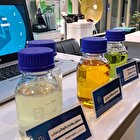Iran Ranks 12th in World in Gene Therapy

“At present, we rank 12th in the world in terms of gene therapy and cell therapy products. Our goal is to become one of the top five countries in the world in this field by the end of the Seventh National Development Plan (2023-2027), and we expect that out of the 14 centers identified in the field of gene therapy, three products each will be introduced into the industry or treatment phase by the end of the program,” Qaneyee said.
“We predict that Iran will become a reference in the field of gene and cell therapy,” he added.
"At present, treatment with viruses has begun and patients have been selected, and this process has been successfully completed. In the field of cell therapy, a new company has been established and has also achieved some successes,” Qaneyee said.
In a relevant development in 2024, a knowledge-based company, consisting of researchers from Iran University of Medical Sciences (IUMS), had also produced carbon-based kits for gene delivery after three years of studies and research.
“This kit was previously produced only in the United States, but by indigenously producing it, we ended the US monopoly,” Morteza Karimi, the managing director of the knowledge-based company, said.
He said that the domestically-produced kit's price comes out at a one-third of its foreign-made equivalents while at the same quality.
“This knowledge-based company started its activity in the field of providing laboratory services in 2013. In 2021, the management of the group focused its studies on producing gene transfer kits and was able to locally produce this product in the country in 2022 to break the US monopoly. After six months, with the efforts of the research department of the company, this kit reached the commercialization stage and became ready to be distributed in the domestic market,” Karimi added.
Pointing out that the gene delivery kit is used to introduce genes and biomolecules into cells in the laboratory, Karimi added, "This kit is used in two fields of cell culture or tissue culture and nanotechnology. It is used in research centers and institutes that work in the field of gene transfer."
"The corresponding American kit is lipofectamine, which is lipid-based. But our kit is carbon-based. It comes out with a specific feature: it can be tracked because it reflects light."
4155/v





















